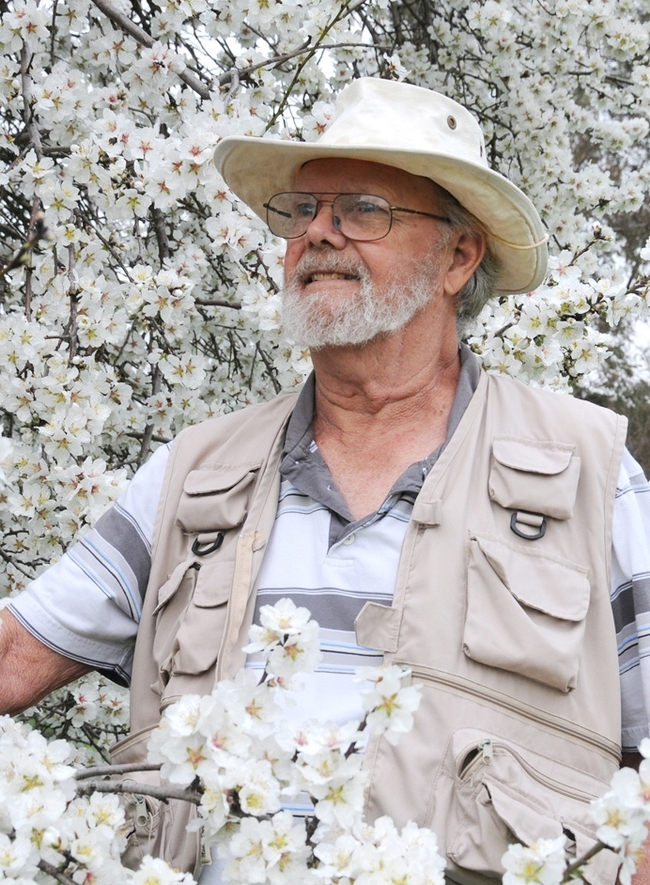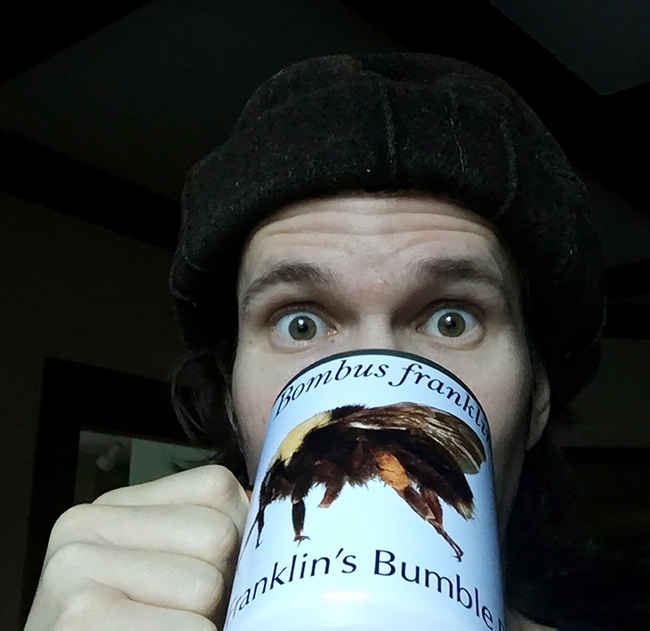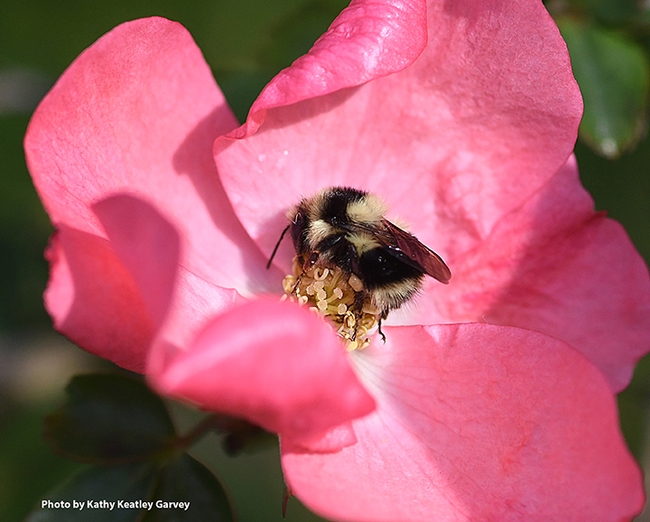
What's it all about? The Bohart Museum of Entomology is launching its second annual Robbin Thorp Memorial Bumble-Bee-of-the-Year Contest to see who can find and photograph the first bumble bee of 2022 in Yolo or Solano counties.
Participants are to capture an image of a bumble bee in the wild in either of the two counties and email the image to bmuseum@ucdavis.edu, with the details of time, date and place. The image must be recognizable as a bumble bee, said contest coordinator Lynn Kimsey, director of the Bohart Museum and a UC Davis distinguished professor of entomology.
The winner will receive a coffee cup designed with the endangered bumble bee that the late Robbin Thorp closely monitored—Franklin's bumble bee, Bombus franklini, known to exist in a small area by the California-Oregon border. UC Davis doctoral alumnus Fran Keller, a professor at Folsom Lake College and a Bohart Museum scientist, designed the cup. Bohart scientist Brennen Dyer photographed the specimen.
Thorp, a global authority on bees and a distinguished emeritus professor of entomology at UC Davis, always looked forward to finding or seeing the first bumble bee of the year in the area.
The native black-tailed bumble bee, Bombus melanopygus, is the first bumble bee to emerge in the area, according to Thorp. It forages on manzanitas, wild lilacs, wild buckwheats, lupines, penstemons, clovers, and sages, among others.
Thorp served on the UC Davis entomology faculty for 30 years, from 1964 to 1994. Although he achieved emeritus status in 1994, he continued to engage in research, teaching and public service until a few weeks before his death on June 7, 2019 at age 85 at his home in Davis.

Nicholson, a researcher in the UC Davis Department of Entomology and Nematology labs of Professor Neal Williams, a pollination ecologist, and Extension apiculturist Elina Lastro Niño, is a 2015 alumnus of The Bee Course, where Thorp taught from 2002 through 2018. The nine-day intensive workshop, geared for conservation biologists and pollination ecologists and considered the world's premiere native bee biology and taxonomic course, takes place annually in Portal, Ariz., at the Southwestern Research Station, part of the American Museum of Natural History, N.Y.
Kimsey praised Thorp for his expertise, generosity and kindness. Kimsey, who first met Thorp when she was a graduate student at UC Davis, said that although he wasn't her major professor, “my project was on bees and he was incredibly helpful and supportive. His enthusiasm about pollinators and bees in particular actually grew after he retired, and he continued helping students and researchers and was the backbone of so much research. His support and kindness was matched by his undemanding assistance and expertise.”
In 2014, Thorp co-authored two books, Bumble Bees of North America: An Identification Guide (Princeton University) and California Bees and Blooms: A Guide for Gardeners and Naturalists (Heyday).
Thorp, the last known person to see Franklin's bumble bee in its native habitat, spotted it in 2006 near Mt. Ashland. The bee inhabits--or did--a 13,300-square-mile area within the five-county area of Siskiyou and Trinity in California; and Jackson, Douglas and Josephine in Oregon.
Thorp sighted 94 Franklin's bumble bees in that area in 1998, but by 2003, the tally had dropped to three. Thorp saw none in 2004 and 2005; one in 2006; and none since. Thorp's determined hunt for the bumble bee resulted in the CNN publication of "The Old Man and the Bee," a spin-off of Hemingway's "The Old Man and the Sea."
Attached Images:
